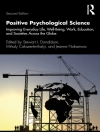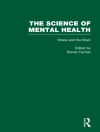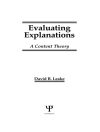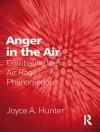In this long awaited book, Stanislav Grof and Christina Grof describe their groundbreaking new form of self-exploration and psychotherapy: Holotropic Breathwork. Holotropic means ‚moving toward wholeness, ‚ from the Greek holos ( whole) and trepein (moving in the direction of). The breathwork utilizes the remarkable healing and transformative potential of non-ordinary states of consciousness. These states engender a rich array of experiences with unique healing potential—reliving childhood memories, infancy, birth and prenatal life, and elements from the historical and archetypal realms of the collective unconscious. Induced by very simple means—a combination of accelerated breathing, evocative music, and bodywork in a safe and supportive setting, Holotropic Breathwork integrates the insights from modern consciousness research, depth psychology, transpersonal psychology, anthropology, Eastern spiritual practices, and mystical traditions. The Grofs‘ work with holotropic states of consciousness has introduced revolutionary changes to psychiatry, psychology, and psychotherapy. Written in a clear, easily understandable style, this indispensable book summarizes their remarkable insights.
Inhaltsverzeichnis
Foreword
Preface
Acknowledgments
1. Historical Roots of Holotropic Breathwork
Sigmund Freud and the dawn of depth psychology
Humanistic psychology and experiential therapies
The advent of psychedelic therapy
Abraham Maslow, Anthony Sutich, and the birth of transpersonal psychology
2. Theoretical Foundations of Holotropic Breathwork
Holotropic states of consciousness
Dimensions of the human psyche
The nature, function, and architecture of emotional and psychosomatic disorders
Effective therapeutic mechanisms
Strategy of psychotherapy and self-exploration
The role of spirituality in human life
The nature of reality: Psyche, cosmos, and consciousness
3. Essential Components of Holotropic Breathwork
The healing power of breath
The therapeutic potential of music
The use of releasing bodywork
Supportive and nourishing physical contact
Mandala drawing: The expressive power of art
4. The Practice of Holotropic Breathwork
Use of Holotropic Breathwork in individual sessions and groups
Setting and interpersonal support system
Theoretical preparation of participants
Screening for physical and emotional contraindications
Practical instructions for breathwork sessions
Preparation for the session and the relaxation exercise
Conducting Holotropic Breathwork sessions
The spectrum of holotropic experiences
The role of the facilitators
Mandala drawing and the processing groups
5. Integration of the Breathwork Experience and Follow-Up Work
Creating conditions for optimal integration
Easing the transition to everyday life
Conducting follow-up interviews
Using various methods complementing Holotropic Breathwork
6. Trials and Tribulations of Holotropic Breathwork Facilitators
Encounter with the military junta in Buenos Aires
Competing with the exhibition of Doberman pinschers
Culture-bound challenges for Holotropic Breathwork facilitators
Technological ordeals in Holotropic Breathwork sessions
The pisspot, oinking piglets, and smoldering Kleenexes
Supreme ordeal Down Under
Conducting Holotropic Breathwork in adversarial settings
7. Therapeutic Potential of Holotropic Breathwork
Healing of emotional and psychosomatic disorders
Favorable effect on physical diseases
Effect on personality, worldview, life strategy, and hierarchy of values
Potential for healing of cultural wounds and historical conflict resolution
8. Therapeutic Mechanisms Operating in Holotropic Breathwork
Intensification of conventional therapeutic mechanisms
Dynamic shifts in the psyche’s governing systems
The therapeutic potential of the death-rebirth process
The therapeutic mechanisms on the transpersonal level
Healing as a movement toward wholeness
9. Physiological Mechanisms Involved in Holotropic Breathwork
Biochemical and physiological changes
Holotropic Breathwork and the “hyperventilation syndrome”
Psychodynamics of psychosomatic disorders
10. Past, Present, and Future of Holotropic Breathwork
Training of Holotropic Breathwork facilitators
Holotropic Breathwork and the academic community
Benefits of the holotropic perspective
Holotropic states of consciousness and the current global crisis
APPENDIX 1: Special Situations and Interventions in Holotropic Breathwork Sessions
The experience of choking and of pressure on the chest
Experience of muscular tensions and spasms
Problems related to blockages in the genital area, sex, and nudity
Overactive, erratic, and aggressive behavior
Working with demonic energy
Excessive self-control and inability to let go
Working with nausea and the tendency to vomit
Standing and dancing in the sessions
Reliving the memory of biological birth
APPENDIX 2: Holotropic Breathwork and Other Breathing Techniques
Bibliography
Index
About Grof Transpersonal Training
Über den Autor
Stanislav Grof, MD, is a psychiatrist who teaches at California Institute of Integral Studies and is the founder of the International Transpersonal Association. He is the author and editor of many books, including
Psychology of the Future: Lessons from Modern Consciousness Research;
The Cosmic Game: Explorations of the Frontiers of Human Consciousness;
Human Survival and Consciousness Evolution;
The Adventure of Self-Discovery: Dimensions of Consciousness and New Perspectives in Psychotherapy and Inner Exploration;
Beyond the Brain: Birth, Death, and Transcendence in Psychotherapy; and
Ancient Wisdom and Modern Science, all published by SUNY Press.
Christina Grof, Ph Dhc, is cocreator of Holotropic Breathwork, founder of the Spiritual Emergence Network (SEN), and the author of many books, including
Beyond Death: The Gates of Consciousness;
Spiritual Emergency: When Personal Transformation Becomes a Crisis;
The Stormy Search for the Self: A Guide to Personal Growth through Transformational Crisis (all with Stanislav Grof), and
The Thirst for Wholeness: Attachment, Addiction, and the Spirit. They reside in Mill Valley, California.












